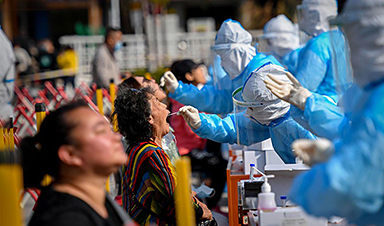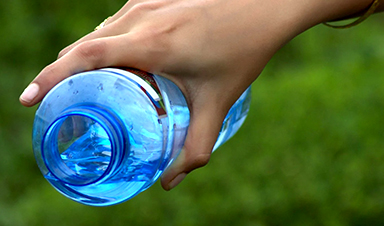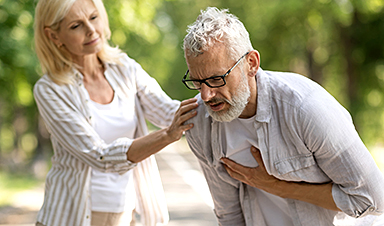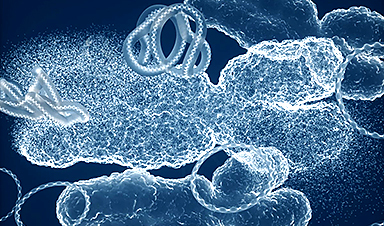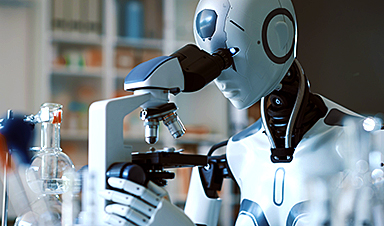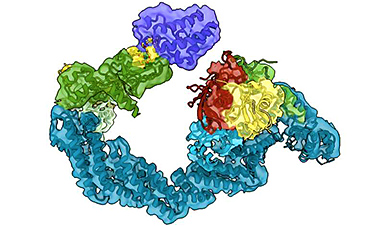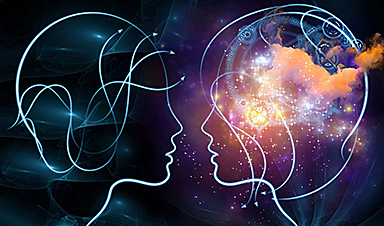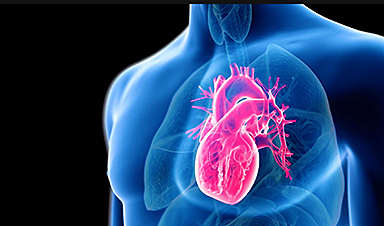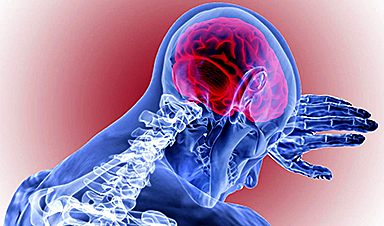People infected with the Delta variant generally do not have COVID-19 symptoms until two days after they start shedding the coronavirus.
People infected with the Delta variant of SARS-CoV-2 are more likely to spread the virus before developing symptoms than are people infected with earlier versions, suggests a detailed analysis of an outbreak in Guangdong, China.
“It is just tougher to stop,” says Benjamin Cowling, an epidemiologist at the University of Hong Kong and a co-author of the study, which was posted on a preprint server on 13 August.
Cowling and his colleagues analysed exhaustive test data from 101 people in Guangdong who were infected with Delta between May and June this year, and data from those individuals’ close contacts. They found that, on average, people began having symptoms 5.8 days after infection with Delta — 1.8 days after they first tested positive for viral RNA. That left almost two days for individuals to shed viral RNA before they showed any sign of COVID-19.
A dangerous window
An earlier study2 and an unpublished analysis by Cowling and others estimate that before Delta emerged, individuals infected with SARS-CoV-2 took an average of 6.3 days to develop symptoms and 5.5 days to test positive for viral RNA, leaving a narrower window of 0.8 days for oblivious viral shedding.
In the latest work, the researchers also found that those infected with Delta had higher concentrations of viral particles, or viral load, in their bodies than did people infected with the original version of SARS-CoV-2. “Somehow the virus is appearing quicker and in higher amounts,” says Cowling.
As a result, 74% of infections with Delta took place during the presymptomatic phase — a higher proportion than for previous variants. This high rate “helps explain how this variant has been able to outpace both the wild-type virus and other variants to become the dominant strain worldwide”, says Barnaby Young, an infectious-disease clinician at the National Centre for Infectious Diseases in Singapore.
The researchers also calculated Delta’s ‘basic reproduction number’, or R0, which is the average number of people to whom every infected person will spread the virus in a susceptible population. They estimated that Delta has an R0 of 6.4, which is much higher than the R0 of 2–4 estimated for the original version of SARS-CoV-2, says Marm Kilpatrick, an infectious-disease researcher at the University of California, Santa Cruz. “Delta moves a bit faster, but is much more transmissible.”
A small number of study participants experienced ‘breakthrough infections’ with Delta after receiving two doses of an inactivated-virus COVID-19 vaccine. But the vaccine reduced participants’ viral loads at the peak of infection.
Vaccinated individuals were also 65% less likely than unvaccinated individuals to infect someone else, although the estimate was based on a very small sample size. This reduction “is significant and reassuring that COVID-19 vaccines remain effective and a vital part of our response to the pandemic”, says Young.
The study has not yet been peer reviewed.
News
The Global Nanomedicine Market: Key Players and Emerging Technologies in Healthcare
This article provides an overview of the global nanomedicine market, highlighting key players, emerging technologies, and the challenges and opportunities that influence its growth and commercialization in the healthcare sector. Nanomedicines are nanotechnology-based drug products [...]
Scientists Have Discovered Toxic “Forever Chemicals” in Bottled Water
Scientists have found toxic PFAS in drinking water samples from around the world, with higher levels in tap water from China compared to the UK. Boiling water or using a filtration jug can reduce [...]
Urban Microbes Are Eating Disinfectants – Are We Fueling a New Health Threat?
New research reveals that microbes in urban environments are evolving to withstand the very cleaning agents designed to eliminate them. The study also uncovers new strains in Hong Kong, previously only found in the [...]
Startling Study Shows High-Potency Cannabis Alters DNA
The study shows that frequent use of high-potency cannabis alters DNA, affecting genes related to energy and immune function. These changes differ between those with and without psychosis, suggesting cannabis use could influence mental health through biological [...]
New nanotherapy targets artery inflammation in cardiovascular disease
Inflammation of the arteries is a primary precursor and driver of cardiovascular disease—the No. 1 killer of people in the United States. This inflammation is associated with the buildup of dangerous plaque inside the [...]
Revolutionary Nanoparticle Therapy for Prostate Cancer
A groundbreaking research effort involving teams from the University of Virginia, Mount Sinai, the University of Michigan, the University of Texas, and others has displayed the clinical efficacy of an innovative therapy that utilizes nanoparticles and [...]
Antibody engineering drives innovation in drug development
Monoclonal antibodies (mAbs) are used to prevent, detect, and treat a broad spectrum of non-communicable and communicable diseases. Over the past few years, the market for mAbs has grown exponentially with an expected compound [...]
Breakthrough Study Reveals How Bladder Cancer Starts and Spreads
Researchers found that DNA mutations from antiviral enzymes and chemotherapy fuel early bladder cancer, while abnormal circular DNA in tumor cells drives resistance to therapy. These discoveries open new therapeutic avenues. A groundbreaking study led by [...]
AI and Quantum Mechanics Accelerate Drug Discovery
A recent article published in the Journal of Chemical Information and Modeling researchers at Southern Methodist University (SMU) have developed SmartCADD, an open-source virtual tool designed to speed [...]
Targeting ‘undruggable’ diseases: Researchers reveal new levels of detail in targeted protein degradation
Researchers at the University of Dundee have revealed in the greatest detail yet the workings of molecules called protein degraders which can be deployed to combat what have previously been regarded as "undruggable" diseases, [...]
Revolutionizing Virology: AI Discovers Over 160,000 New RNA Viruses
Largest discovery of new virus species sheds light on the hidden virosphere. Artificial intelligence (AI) has been used to reveal details of a diverse and fundamental branch of life living right under our feet and in every [...]
Cardiac Crisis: COVID-19 Doubles Risk of Heart Attacks, Strokes, and Death
Research indicates that COVID-19 survivors face doubled risks of severe cardiac events for years after recovery, especially if hospitalized. People with A, B, or AB blood types are particularly vulnerable, highlighting the need for personalized approaches [...]
AI steps into science limelight with Nobel wins
For long periods of its history, artificial intelligence has lurked in the hinterland of science, often unloved and unfunded—but two Nobel prizes in one week suggest its time in the sunshine has finally arrived. [...]
MIT Scientists Shed New Light on the Critical Brain Connections That Define Consciousness
A new study provides further evidence that consciousness depends on communication between the brain’s sensory and cognitive regions in the cortex. Our brains are constantly making predictions about our surroundings, enabling us to focus [...]
Common Chemicals Found in Shampoo and Plastic Could Be Quietly Disrupting Your Heart’s Rhythm
UC study of Fernald data links environmental phenols to heart toxicities Environmental phenols are present in numerous everyday consumer products, serving as preservatives in packaged foods, parabens in shampoos, and bisphenol A (BPA) in [...]
Revolutionary Brain Tech Offers New Hope for Stroke and Injury Recovery
University of Pittsburgh researchers report that deep brain stimulation (DBS) can effectively enhance motor functions in individuals with arm and hand paralysis due to brain injuries, with promising results from early human and monkey [...]
